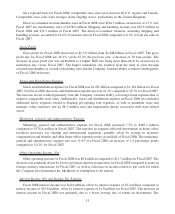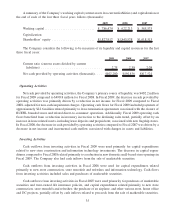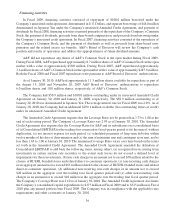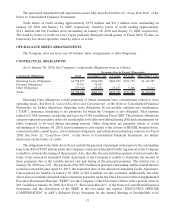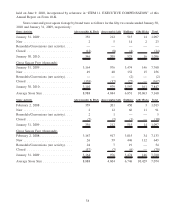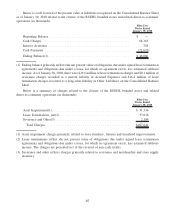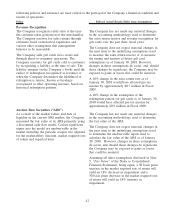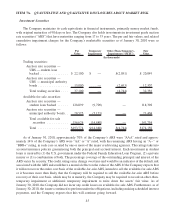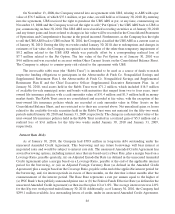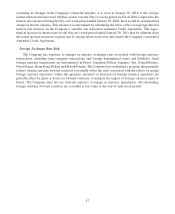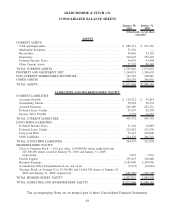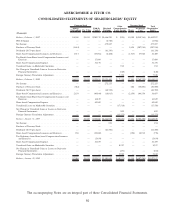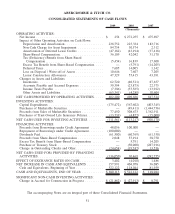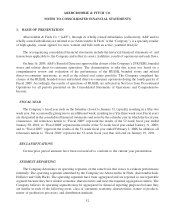Abercrombie & Fitch 2009 Annual Report Download - page 43
Download and view the complete annual report
Please find page 43 of the 2009 Abercrombie & Fitch annual report below. You can navigate through the pages in the report by either clicking on the pages listed below, or by using the keyword search tool below to find specific information within the annual report.
following policies and estimates are most critical to the portrayal of the Company’s financial condition and
results of operations.
Policy Effect if Actual Results Differ from Assumptions
Revenue Recognition
The Company recognizes retail sales at the time
the customer takes possession of the merchandise.
The Company reserves for sales returns through
estimates based on historical experience and
various other assumptions that management
believes to be reasonable.
The Company sells gift cards in its stores and
through direct-to-consumer operations. The
Company accounts for gift cards sold to customers
by recognizing a liability at the time of sale. The
liability remains on the Company’s books until the
earlier of redemption (recognized as revenue) or
when the Company determines the likelihood of
redemption is remote, known as breakage
(recognized as other operating income), based on
historical redemption patterns.
The Company has not made any material changes
in the accounting methodology used to determine
the sales return reserve and revenue recognition for
gift cards over the past three fiscal years.
The Company does not expect material changes in
the near term to the underlying assumptions used
to measure the sales return reserve or to measure
the timing and amount of future gift card
redemptions as of January 30, 2010. However,
changes in these assumptions do occur, and, should
those changes be significant, the Company may be
exposed to gains or losses that could be material.
A 10% change in the sales return rate as of
January 30, 2010 would have affected pre-tax
income by approximately $0.7 million in Fiscal
2009.
A 10% change in the assumption of the
redemption pattern for gift cards as of January 30,
2010 would have affected pre-tax income by
approximately $0.9 million in Fiscal 2009.
Auction Rate Securities (“ARS”)
As a result of the market failure and lack of
liquidity in the current ARS market, the Company
measured the fair value of its ARS primarily using
a discounted cash flow model. Certain significant
inputs into the model are unobservable in the
market including the periodic coupon rate adjusted
for the marketability discount, market required rate
of return and expected term.
The Company has not made any material changes
in the accounting methodology used to determine
the fair value of the ARS.
The Company does not expect material changes in
the near term to the underlying assumptions used
to determine the unobservable inputs used to
calculate the fair value of the ARS as of January
30, 2010. However, changes in these assumptions
do occur, and, should those changes be significant,
the Company may be exposed to gains or losses
that could be material.
Assuming all other assumptions disclosed in Note
5, “Fair Value” of the Notes to Consolidated
Financial Statements, being equal, a 50 basis point
increase in the market required rate of return will
yield an 18% decrease in impairment and a
50 basis point decrease in the market required rate
of return will yield an 18% increase in
impairment.
42



